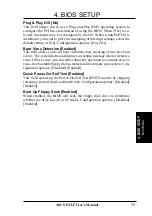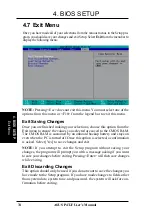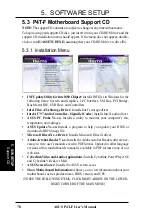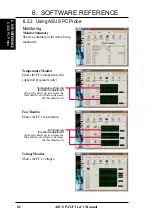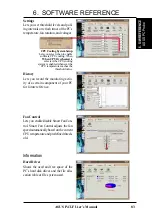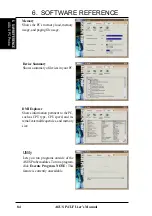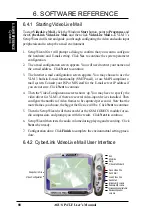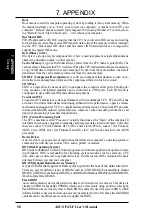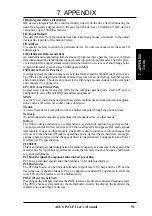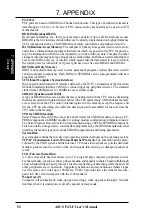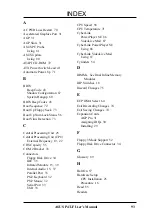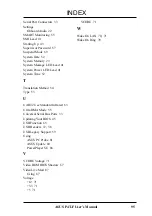
ASUS P4T-F User’s Manual
87
6. SOFTWARE REFERENCE
6. S/W REFERENCE
Cyberlink
6.4 CyberLink VideoLive Mail
CyberLink’s VideoLive Mail Plus Ver 3.0 (a.k.a. VLM 3) is a convenient and excel-
lent way to create professional quality video mails from PC video/audio input de-
vices and to send the mails to any recipients via VLM 3’s built-in e-mail system
through the Internet. VLM 3’s mails comprise video, sound, or snapshot informa-
tion; and thus may convey the most profound information to target audiences. It is
very convenient for mail recipients who do not need to install additional software
component in order to view VLM 3 mails.
VLM 3 works as a very applicant sales tool. It efficiently delivers profound and live
product information to your target customers without costing a fortune. VLM 3 also
helps corporate managers easily give vivid speeches and broadcast through corpo-
rate E-mail system. For personal or home users, VLM 3 easily records live video
clips allowing users to send them to friends or family members across the Internet.
VLM 3 loads video messages from PC cameras, digital camcorders, analog camcorder
via video capture cards, or from an existing AVI video clips, and captures audio
messages from PC microphones. Video and audio messages are encoded at a very
high compressed rate in a real-time mode. From data input, data conversion, to
sending video mails via Internet, or saving data to disks, the whole procedure is
done in an easy and continuous process.
VLM 3’s video clip compression rate is up to 1:900, and its playback rate is up to 30
frame per second. VLM 3 provides CIF (352 x 288 pixel) display resolution, and
support true color configuration. A one-minute video mail with QCIF (176 x 144)
resolution takes up less than 500KB of memory, making it easy to transmit and save
mail. Users may always adjust resolution and recording parameters for different
purpose.
VLM 3 supports all the hardware devices that are compliant with Video for Win-
dows standard. Video for Windows is a well-accepted and well-tested standard. Thus,
users do not have to worry about compatibility issues.

